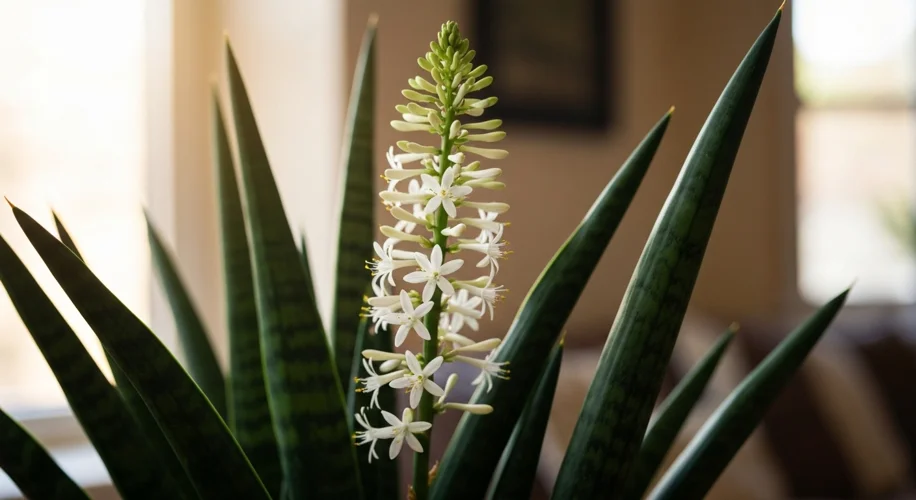It’s always a delightful surprise when a plant decides to put on a show, especially when you return from a holiday to find unexpected blooms. For many of us, our Sansevieria, commonly known as the snake plant, is a steadfast, low-maintenance companion. But what does it mean when this typically foliage-focused plant suddenly produces flowers?
I recently heard from a reader whose snake plant surprised them with a bloom after a vacation. They were curious if this flowering was a sign of stress or a healthy, thriving plant. Let’s dig into this!
Sansevieria Flowers: A Rare Treat
Snake plants are primarily grown for their striking, upright leaves. Their flowers are not their main attraction, and they don’t bloom frequently, especially indoors. When a Sansevieria does flower, it’s often a beautiful, albeit subtle, event. The blooms are typically small, white or greenish-white, and often fragrant, usually appearing on a tall spike.
Is Flowering a Sign of Stress?
This is a common question, and the answer is often nuanced. While some plants might flower as a last-ditch effort when under extreme duress, for Sansevieria, flowering is generally considered a sign of maturity and good health, rather than stress.
Think of it this way: a plant needs to be well-established, healthy, and have sufficient energy reserves to invest in flowering and potentially producing seeds. It’s an energy-intensive process. If your snake plant was stressed, you’d more likely see signs like yellowing leaves, wilting, or slowed growth.
In fact, the opposite is often true. A snake plant that has been a bit neglected, perhaps underwatered or root-bound, is more likely to flower. This isn’t because it’s unhappy, but because these conditions can sometimes trigger a mature plant’s natural reproductive cycle.
So, if your snake plant has bloomed, it’s a good indication that the plant is mature and has been relatively content in its environment. It’s happy enough to reproduce!
What to Do When Your Sansevieria Blooms
- Enjoy the Show: Admire the unique blooms! Many people miss this event because it’s uncommon.
- Keep Watering as Usual: Continue with your regular watering schedule. Don’t overwater, as snake plants prefer to dry out between waterings.
- No Special Fertilizing Needed: While you can fertilize during the growing season, flowering doesn’t require special attention. A balanced, diluted fertilizer occasionally is fine.
- Pruning After Blooming: Once the flowers fade, you can trim the flower stalk back to the base of the plant using clean, sharp scissors or pruners. This helps the plant redirect its energy back into leaf production.
In Conclusion
If your snake plant has graced you with flowers, consider it a testament to its health and maturity. It’s not a cry for help, but rather a beautiful, natural event. So, sit back, enjoy the subtle fragrance and unique appearance, and know that your plant is doing quite well!

